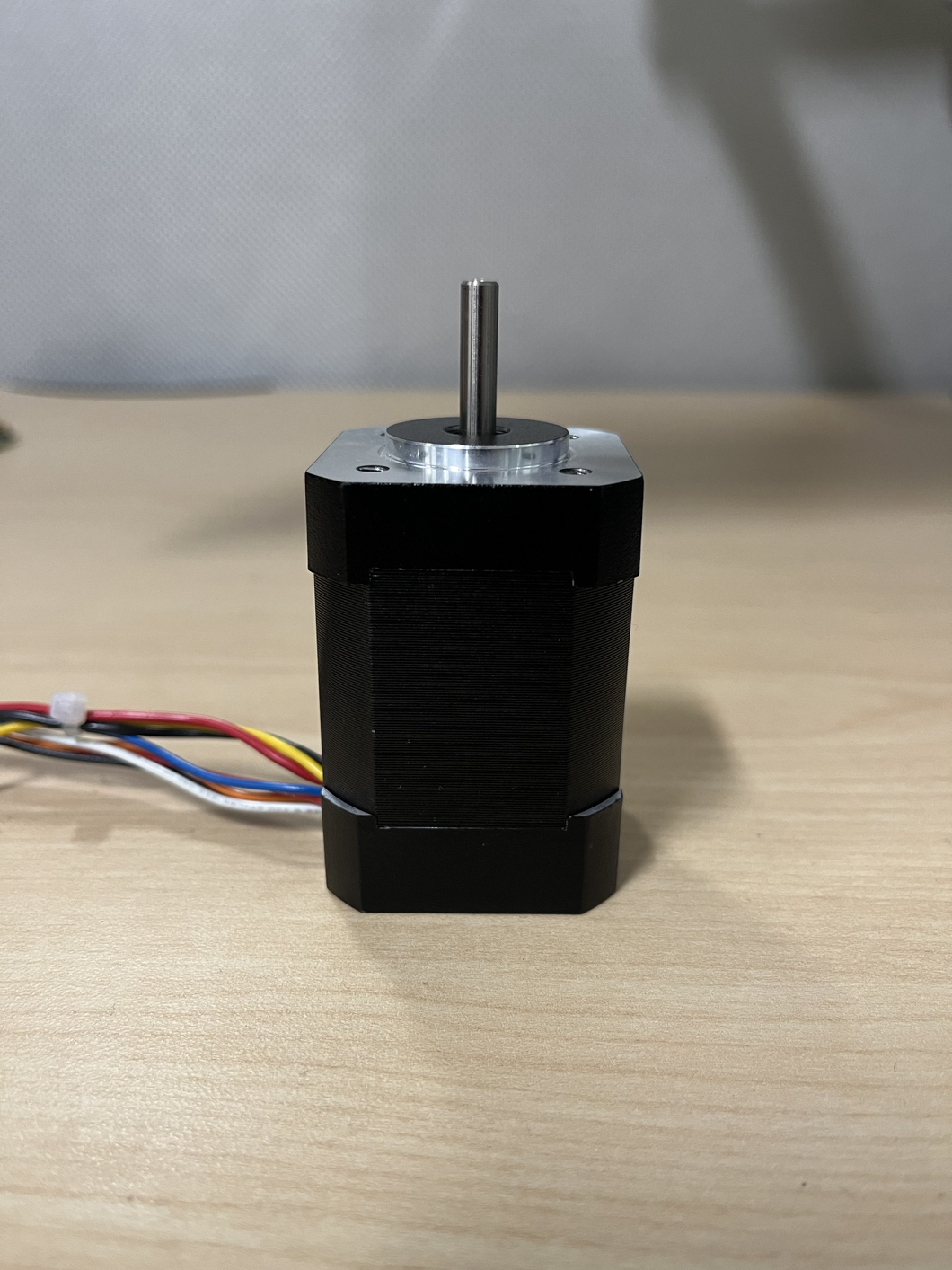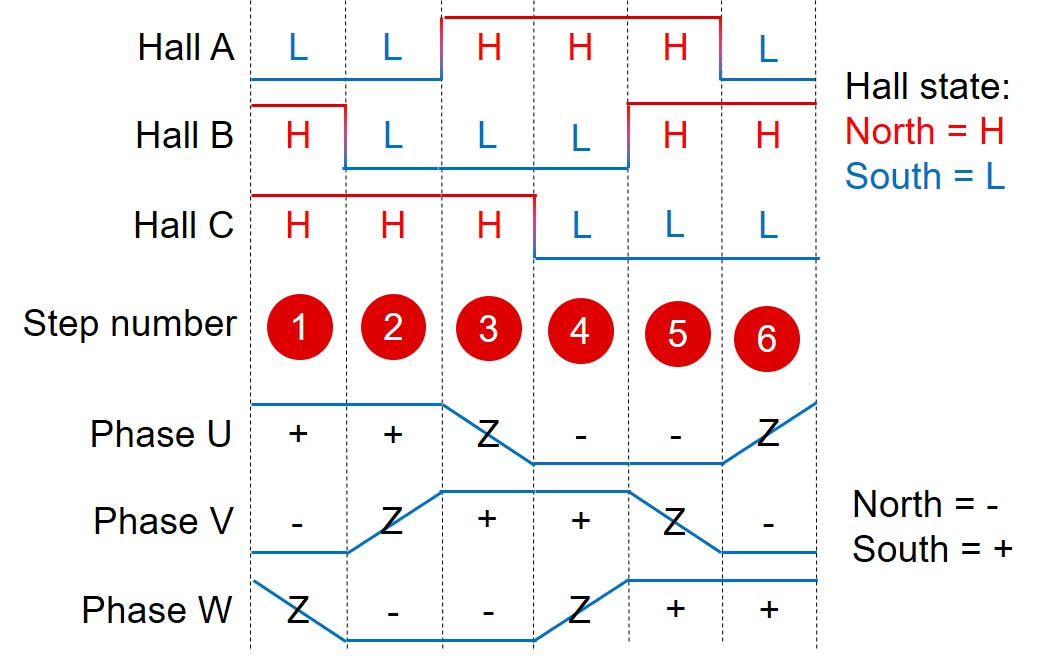SBAU410 October 2022 TMAG5115
3.2 BLDC Motor Operation
The TMAG5115EVM is intended to be a direct drop-in replacement for the Hall-effect sensor modules found in NEMA17 BLDC motors (see Figure 3-2). The EVM features three functionally independent circuits, one for each of the TMAG5115 devices on the PC board, with each sensor spaced 120° apart. The three sensors and the specific 120° spacing yield what is commonly referred to as a six-step commutation sequence, a common motor commutation algorithm for sensored motor control. The TMAG5115 reacts to the magnetic field generated by the permanent magnets located on the rotor of the magnet. As the motor spins, the three Hall sensors create a distinct state every 60° electrical degrees. Each unique state lets the motor controller know the motor’s position and determine how the stator coils must be excited within the BLDC motor to keep the rotor spinning. Figure 3-3 shows a typical six-step control scheme example.
 Figure 3-2 NEMA17 42-mm BLDC Motor.
Figure 3-2 NEMA17 42-mm BLDC Motor.  Figure 3-3 Six-Step Motor Commutation Control Scheme.
Figure 3-3 Six-Step Motor Commutation Control Scheme.